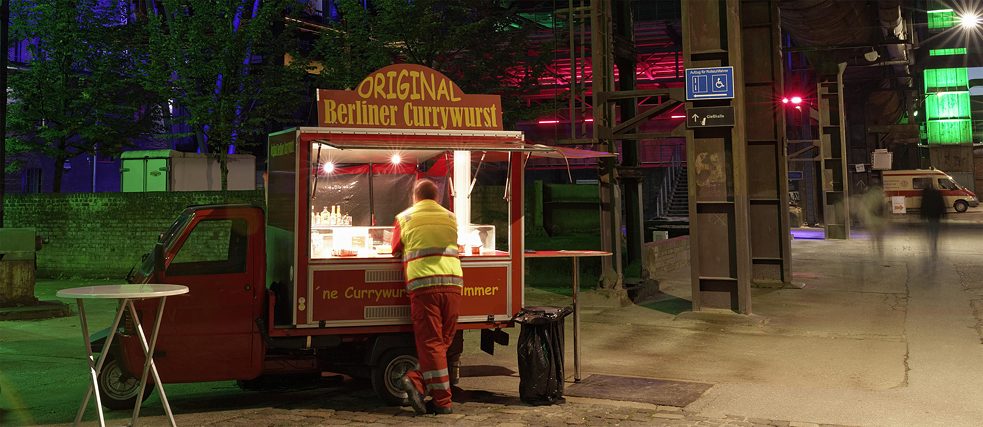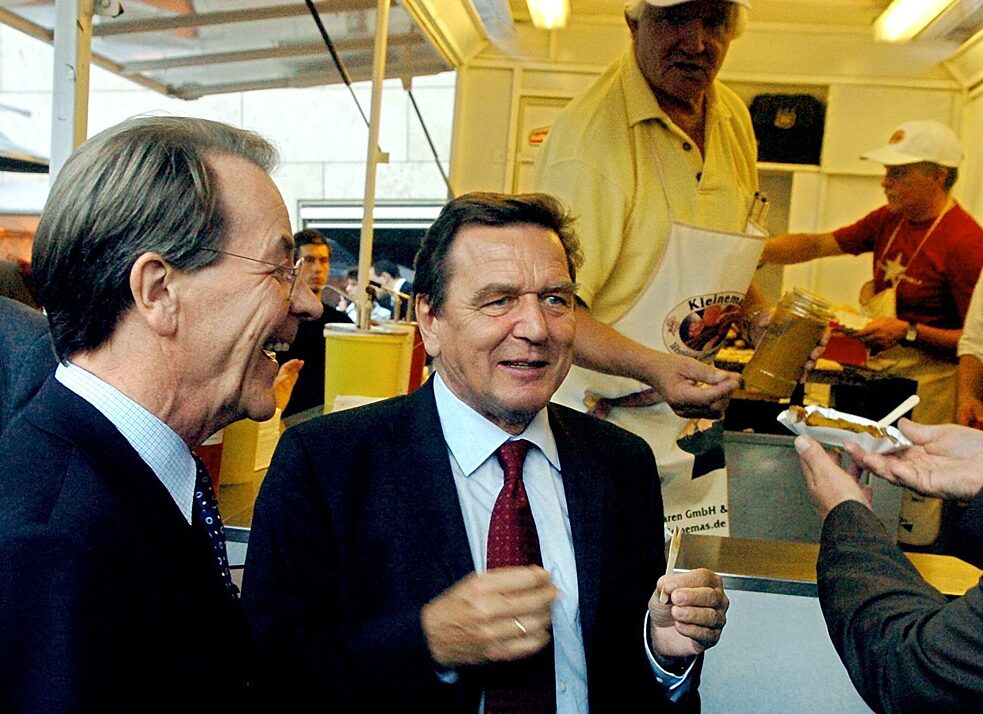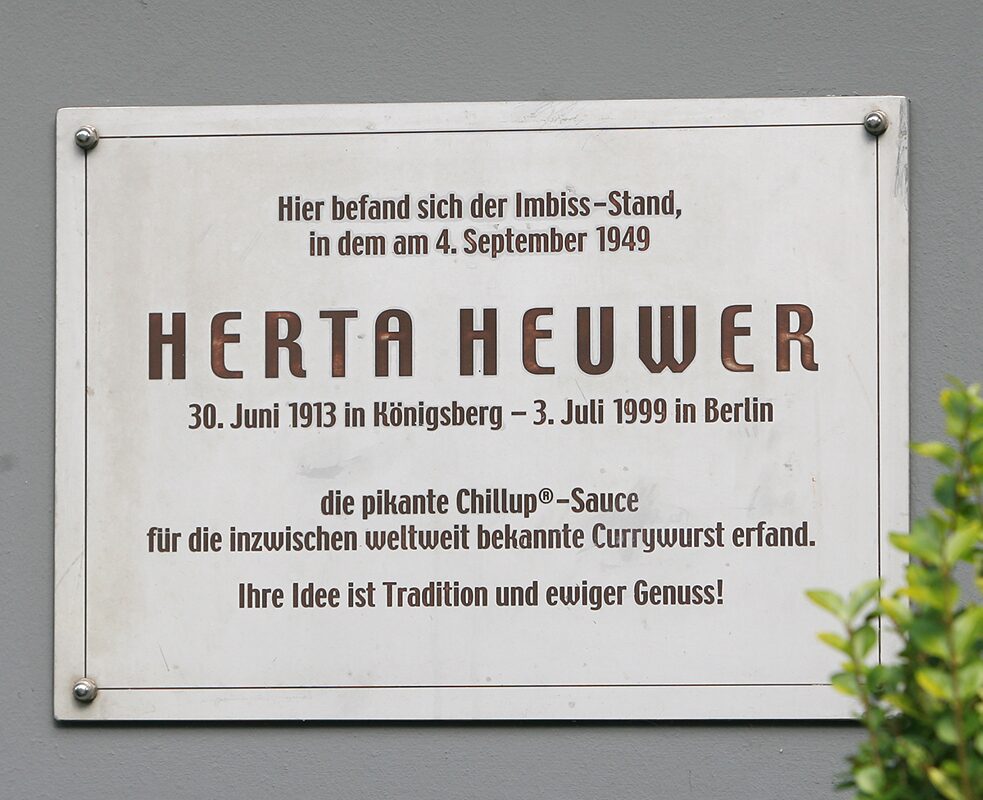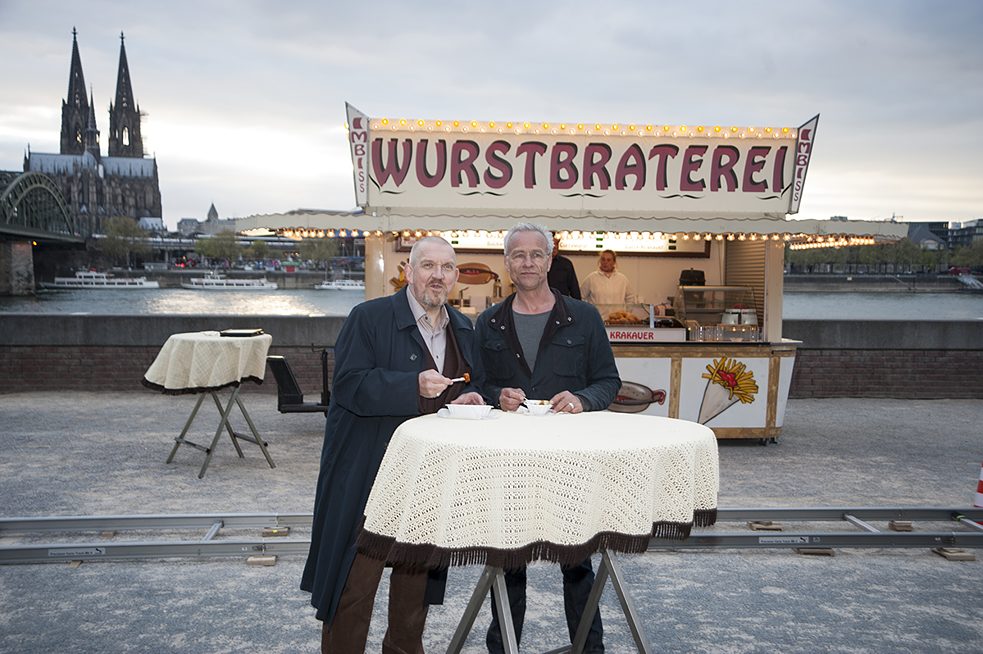Celebrating the currywurst
The curried sausage, an icon of German cuisine

In addition to roast pork with dumplings, a pork joint with sauerkraut, and potato salad, no list of German national dishes would be complete without the humble currywurst or curried sausage. The spicy snack was invented 70 years ago.
By Carsten Sebastian Henn
It should come as no surprise that Germany’s culinary national anthem is about a spicy, saucy sausage: “Gehse inne Stadt / wat macht dich da satt – ’ne Currywurst. / Kommse vonne Schicht / wat schönret gibt et nich / als wie Currywurst.” (Heading to the city / what fills you up – a currywurst. / Coming off a shift / nothing could be better / than a currywurst.) In 1982, musician Herbert Grönemeyer sang the praises of the humble currywurst, comfort food extraordinaire and the perfect complement to a beer, though he wrote neither the lyrics nor the music. The musician would even later go on the record claiming not to be a huge fan of the currywurst. This is a lonely position to take in Germany, where over 800 million of the curried sausages are consumed every year, which works out to around ten per person. Any politician who wants to be portrayed as a man or woman of the people during an election cycle would be well advised to grab a plastic fork and pose for a photo at a snack stall smiling over an order of currywurst and chips. It has even been said that former German Chancellor Gerhard Schröder only won re-election in 2002 because he confessed that the currywurst was his favourite dish. Here the bedfellow to the bosses sided with the people at a culinary level at least.
 Some claim former German Chancellor Gerhard Schröder only won re-election in 2002 because he confessed that the currywurst was his favourite dish.
| Photo: © picture-alliance/dpa/dpaweb / Andreas Altwein
Some claim former German Chancellor Gerhard Schröder only won re-election in 2002 because he confessed that the currywurst was his favourite dish.
| Photo: © picture-alliance/dpa/dpaweb / Andreas Altwein
More than just bratwurst with curry ketchup
How, though, did the currywurst become such an icon of German cuisine, this dish with a South Asian flair that must have been very exotic to the German taste bud?
In his 1993 novella The Invention of the Curried Sausage, Uwe Timm quite charmingly claims that the currywurst was invented in Hamburg. But his literary protagonist Lena Brücker did not create the first curried sausage in Hamburg in 1947; Herta Heuwer from Berlin is the rightful holder of this title some two years later. Her story would have provided enough material for a book as well: in summer of 1949, Herta Heuwer began running a snack bar on the corner of Kant Straße and Kaiser-Friedrich-Straße in Berlin-Charlottenburg, which is where the currywurst was born on September 4. She invented the curry sauce that turned an ordinary bratwurst into the exotic currywurst. She claims an English soldier gave her the requisite spices for her signature dish. In 1959, she had her special sauce trademarked as “Chillup”, a portmanteau of ‘chilli’ and ‘ketchup’, although Heuwer always insisted she used only tomato puree and spices.
 Memorial plaque to the mother of the currywurst in Berlin.
| Photo: picture-alliance/dpa/Alina Novopashina
And if this sounds too good to be true, just wait. There is more to the story.
Memorial plaque to the mother of the currywurst in Berlin.
| Photo: picture-alliance/dpa/Alina Novopashina
And if this sounds too good to be true, just wait. There is more to the story.
Enter Max Brückner, a butcher originally from Johanngeorgenstadt in the Erz Mountains now working in Berlin. Natural sausage casings were a scare luxury after the war, so he invented a sausage without a casing, the “Spandauer ohne Pelle”. But marketing his new sausage proved more difficult than expected. Nikolai Wojtko describes the ingenious solution in the philosophical culinary journal Epikur as follows: “Brückner had heard about resourceful Herta Heuwer. Max Brückner’s junior partner worked with her to develop a ketchup-based seasoned sauce that would help sell the sausage. The marketing concept was simple. The sauce covered the sausage so no one could tell it didn’t have a casing. Once the currywurst was a resounding success, the casing-free sausage born out of necessity was able to emerge from the shadows and claim its rightful place. A sausage is made of everything the butcher cannot otherwise use finely chopped as the ‘brät’ or filling; the name ‘bratwurst’ comes from this word for the filling and not from how a sausage is grilled or otherwise prepared.” And while Herta Heuwer had developed her own spicy sauce, real success only came after as it was refined over the course of this joint venture.
Symbol of culinary individuality
Since then, the currywurst has become a free agent. Even in the land of patents and norms, allotment rules and regulations, and the beer purity law, it is not subject to any constraints, and has almost become a symbol of culinary individuality. There are no real rules that govern how a proper currywurst is to be prepared, its weight, degree of charring, with or without a casing, whether the sauce goes on warm or cold, or if ketchup with a sprinkling of curry powder is preferred. It is sometimes even upgraded with truffles or gold leaf. Generally served on a simple paper tray, the currywurst has also graced fine porcelain and been flanked by champagne. Top chefs like Tim Mälzer and Frank Rosin have published their own ultimate curried sausage recipes. Today the currywurst crosses all economic and educational boundaries, and jokes have even taken it into the hallowed halls of academia: “What does a physicist with a job say to a physicist without a job? One currywurst with a side of chips, please!” Germany united in sausage forever.
 Closing out the case with a currywurst: The Cologne detective duo from the popular Sunday evening "Tatort" series has ended almost every episode enjoying a curried sausage on the banks of the Rhine for decades.
| Photo: picture-alliance/ Sven Simon
Closing out the case with a currywurst: The Cologne detective duo from the popular Sunday evening "Tatort" series has ended almost every episode enjoying a curried sausage on the banks of the Rhine for decades.
| Photo: picture-alliance/ Sven Simon